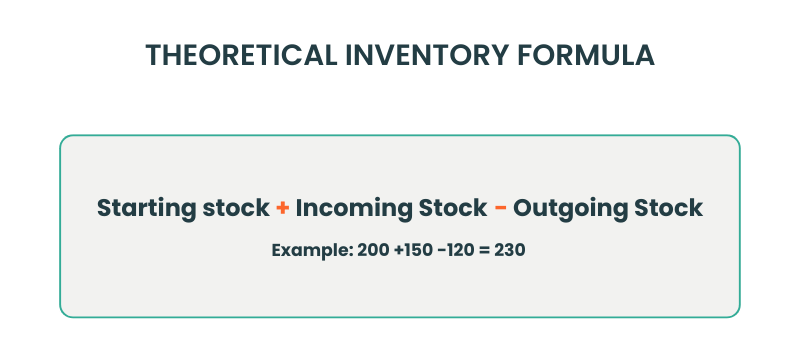

In B2B, mastering inventory is a strategic challenge. Poorly managed inventory can lead to issues like stockouts, high financial costs, and ultimately, lost revenue. Fortunately, there are several ways to track your stock levels. One of the most useful is theoretical inventory (also called expected inventory). It allows you to monitor products daily, anticipate needs, and make smarter purchasing decisions.
In this article, we’ll cover the definition of theoretical inventory, how it differs from actual/physical inventory, the formula to calculate it, the key benefits for small and medium-sized businesses (SMBs), and how a solution like Erplain can help you track theoretical inventory in real time, reduce discrepancies, and optimize your inventory management.
Theoretical inventory is the stock level calculated based on the movements recorded in your system: incoming stock (purchases, receiving inventory) and outgoing stock (sales, order shipments).
In other words, it’s the inventory you should have according to your records. This figure doesn’t take into account real-life issues such as damaged, stolen, or incorrectly logged items.
For example, let’s say an auto parts distributor:
Its theoretical inventory is 120 parts. However, if 2 parts were damaged and 1 was misplaced, the actual inventorywould be 117.
Understanding the difference between theoretical inventory and physical inventory is essential in inventory management:
In practice, theoretical inventory helps guide your purchasing decisions and sales strategies, but it should be regularly compared to physical inventory through stock counts to avoid discrepancies.

Even with careful tracking, differences between expected and physical inventory are inevitable. Common causes include:
These discrepancies may seem small, but they impact profitability and customer satisfaction. That’s why frequent stock counts are necessary to update your theoretical inventory if needed.
For small and medium-sized B2B businesses, reliable expected inventory offers major advantages:
Without waiting for a physical count, you know exactly what you should have in stock. This enables quicker restocking and sales decisions.
By closely tracking outgoing stock and forecasting orders, theoretical inventory alerts you when you approach reorder points, reducing the risk of stockouts that harm customer satisfaction.
Excess stock ties up capital unnecessarily and increases storage costs. With accurate theoretical inventory, you can fine-tune stock levels, freeing up cash for other priorities.
Selling items you no longer have can damage trust. A well-maintained expected inventory prevents these issues, strengthening relationships with customers.
The formula is straightforward:
Theoretical inventory = Starting stock + Incoming stock (purchases, receiving) – Outgoing stock (sales, order shipments)
Example:
Theoretical inventory = 230 parts
Accuracy is key. Incorrect data entry, such as recording the wrong quantities for a supplier delivery or a customer order, creates discrepancies between theoretical and actual inventory.

Discrepancies can quickly occur; hence, it is essential to follow these best practices to ensure accurate data:
Set up clear, simple workflows for logging incoming and outgoing inventory. Every supplier delivery, customer return, or order shipment must be recorded immediately. Don’t forget to log damaged, expired, or defective items.
An annual stock count isn’t enough. Regular stocktaking, whether by product category or warehouse area, helps identify and correct discrepancies quickly.
Use dedicated software to automate updates and reduce human error. Paired with barcode scanning, this minimizes input mistakes. Digitalization ensures your sales, purchases, and warehouse movements are always synced in real time.
Even the best tool won’t help if staff aren’t trained properly. Make sure your team understands and follows the new processes to avoid misalignment between decision-makers and operations.
Erplain gives B2B companies the speed and accuracy they need to stay competitive.
With its intuitive interface, Erplain centralizes all your sales, purchasing, and inventory data. Every movement is logged automatically: supplier deliveries, customer orders, returns, or stock movements (warehouse transfers, stock entries, stock removals…). The result? Your theoretical inventory is always up to date without manual effort.
With real-time inventory visibility, Erplain helps you:
Whether you’re managing seasonal items, high-value products, or goods with specific constraints (batches, serial numbers, expiration dates), Erplain ensures reliable visibility and traceability.

With Erplain, you have a complete solution to automatically calculate theoretical inventory and reduce discrepancies.
